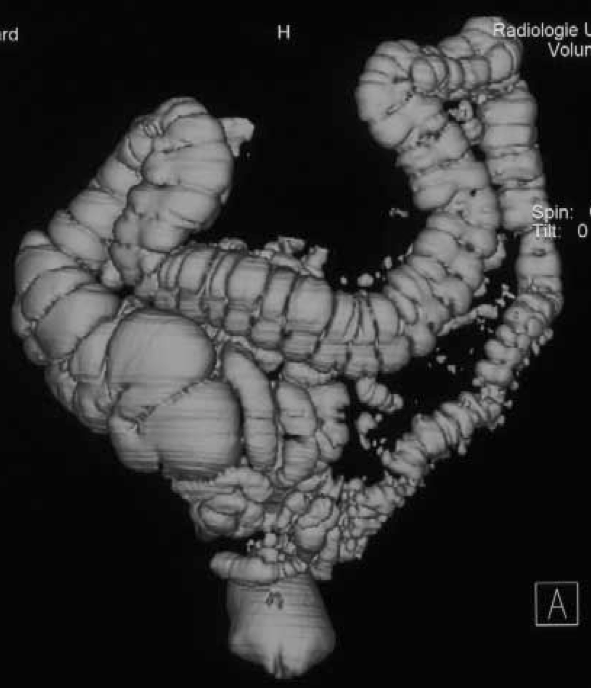Large Bowel (colon)/ diverticulitis
The question as to why diverticula develop still remains unanswered, though it is believed that the fiber-poor diet in Western industrialized countries plays an important role. Some 10-25% of persons with diverticula develop diverticulitis as a complication, and 10-25% of them have a complicated course. Diverticula can develop in any part of the large intestine, but they most commonly cause inflammation and discomfort in the sigmoid colon in the left lower abdomen, and so the disease is usually called sigmoid diverticulitis.
Persons with diverticula often complain of crampy pains, usually in the left lower abdomen, flatulence and irregular bowel movements, all of which can suggest irritable bowel syndrome. Inflamed diverticula cause such symptoms as constipation or diarrhea, fever, nausea and vomiting, and can culminate in peritonitis when a diverticulum perforates; parameters of inflammation, particularly white blood cells, are elevated. Patients with diverticulitis can expect to have flares; these influence quality of life and also pose a permanent risk of perforation. There is also the danger that diverticula can bleed. If diverticulitis recurs, or if the first attack is especially serious and complicated, surgery is recommended.
Colon surgery has now become routine. The diseased portion of the large intestine is removed and today such operations are almost always done laparoscopically. That way, the diseased portion can be readily recognized and removed, with minimal damage to the remaining colon.

